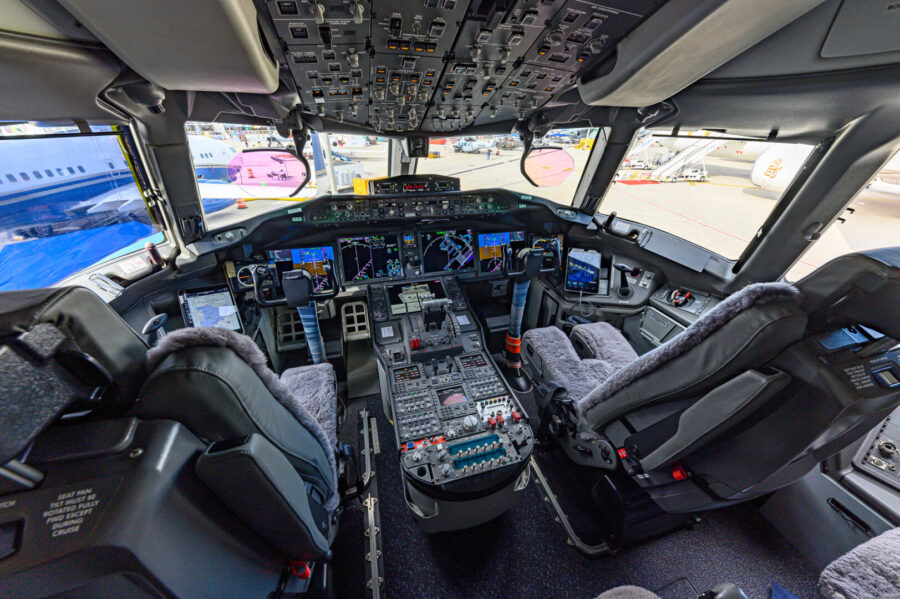Boeing Unveils VERA Display to Boost 777-9 and 737-10 Test Success

Boeing has rolled out its new Visually Enriched Rendering Application (VERA), an innovative flight deck display system designed to improve the efficiency and safety of flight test maneuvers for its next-generation aircraft. Initially deployed on the 777-9 and 737-10 test fleets, VERA integrates real-time flight test data directly into primary flight displays (PFDs) rather than relying on auxiliary cockpit screens. By doing so, Boeing aims to raise first-time test success rates from about 70 percent to 85 percent and eventually reach 98 percent, matching the performance seen in its defense programs.
Flight testing is one of the most demanding phases of aircraft development, requiring pilots to hit precise test points under complex conditions while meeting strict program timelines. These requirements often clash, forcing test crews to repeat difficult maneuvers and adding time and expense to certification schedules. Boeing’s engineers and pilots created VERA to address both challenges simultaneously, enhancing situational awareness and reducing the need for repeat flights while maintaining rigorous safety standards.
Unlike older test displays such as Boeing Commercial Airplanes’ LabVIEW Airplane Display System (LADS), VERA was engineered according to the company’s established flight deck philosophy. The system renders test parameters using familiar colors, symbols, and layouts found on production aircraft displays—magenta for targets, red for limits—eliminating the need for pilots to relearn color codes or symbology. This intuitive interface allows test pilots to focus on flying complex maneuvers rather than mentally fusing data from multiple sources.

The display’s hardware integration is surprisingly straightforward. Modern multimode display systems on Boeing jets feature multiple input channels; in the case of the 737 MAX, one channel is typically unused. For the 777-9, Boeing temporarily reroutes a redundant fiber-optic link to feed test data to the PFD without creating new software or affecting the production system. Pilots activate VERA by turning a rotary switch that shifts the standard PFD to the adjacent inboard screen and replaces it with the test display directly in front of them.
VERA gives pilots immediate feedback on parameters such as G loads, bank angles, rudder pedal deflection, side slip angle, and control column position—all essential metrics for complex certification tests. For example, during a dynamic maneuver requiring -0.5g followed by 1.5g, the display changes color the moment the pilot crosses the test threshold, confirming the point has been achieved and eliminating guesswork. This instant cueing reduces workload, improves situational awareness, and enhances safety by preventing unnecessary repetition of test points.
Christopher Caps, a 777X project pilot who helped develop the system, describes the difference succinctly: “The big difference between LADS and what we are doing with VERA is LADS would tell me when I broke the airplane. It never told me when I met the technical needs of the test point.” Now, instead of piecing together scattered data or relying on postflight analysis, pilots can see at a glance whether they are within limits or meeting targets.
Boeing named the system in honor of the late Vera Martinovich, a company engineer and manager who supported its early development. VERA underwent nearly two years of engineering simulator and human factors testing with more than a dozen Boeing pilots before its first use on a 777-9 certification flight in May. It is now installed on three 777-9 test aircraft and a 737-10 and will form part of the baseline configuration for the upcoming 777-8F test fleet.
By transforming how flight test data is presented, VERA represents a significant step forward in hyperefficient aircraft certification. Boeing expects the system to streamline test operations, reduce costs, and accelerate the entry into service of its new widebody and single-aisle jets—supporting the company’s broader recovery plan and signaling a new era of data-driven, pilot-centered flight testing.
Related News: https://airguide.info/?s=boeing+777, https://airguide.info/?s=boeing+737
Sources: AirGuide Business airguide.info, bing.com, aviationweek.com
